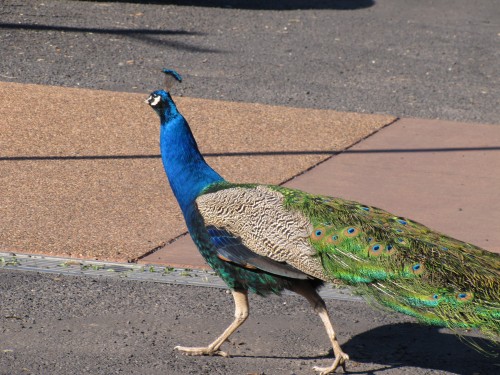Australia Day
January 26th is celebrated throughout Australia as our National Day. It was on this day in 1788 that this new country was founded by the first European settlers to arrive here. I thought I’d share a few images of things that are quintessentially Australian as my way of celebrating Australia day, and sharing something of our country with others.
Australia is known for its wonderful wildlife. The kangaroo would have to be one of the most recognisable members of our fauna. The cuddly look of the Koala would also be recognised world wide.
Australia is also known for its amazing array of plants and wildflowers. Probably the most easily recognised tree would be the eucalypt (or gum) tree. There are hundreds of different species; I will show only one here. This scene, taken in the mid north farming area of South Australia, is typical of many parts of our land.
Of our stunning array of wildflowers, the banksia is easily recognised by many Australians. These magnificent plants give an amazing display when in full flower. The birds go crazy feeding on the nectar and seeds they produce. Photographers, artists and gardeners go equally crazy over them
Now we turn to the birds. With about 800 species Australia is a plentiful land for the bird lover. Our vast range of parrots and honeyeaters, blue wrens and emus, waterfowl, waders, bush birds and sea birds attract birders from the world over. I’ve just chosen several to feature here.
Australia has so many beautiful birds it is hard just to show only two. Many more are featured in my photo gallery here.
Finally, one of Australia’s most recognisable landmarks, the Sydney Opera House.I and the Bird #41
The latest edition of I and the Bird comes from Melbourne, Australia – practically a next door neighbour – it’s only about an eight hour car trip from my home.
The host this time is Snail on her blog called A Snail’s Eye View. It’s about birds, nature, life and almost anything.
This edition has a particularly literary look at birds from all over the world. It’s well worth a visit.
I yes, I did get my contribution in on time for this edition.
Catch it here.
Bird Word: Extinct
Extinct: a species that has died out and is no longer in existence.
Sadly, some bird species have completely died out and no longer exist for our our enjoyment. Not only are we the poorer for this sad state, the environment is the big loser. Extinct Australian birds include:
- Kangaroo Island Emu (this island is off the coast of South Australia)
- King Island Emu (between Tasmania and Victoria)
- Paradise Parrot
For a complete list of extinct Australian birds go to the Birds Australia site here.
In Cloud Cuckoo Land
On my writing blog I have been writing a series of articles about idioms, their origins and meanings. Some of these relate to birds in interesting ways. This is one of them.
“In cloud cuckoo land.”
Origins:
This idiom is a translation of the name of an imaginary city in a play called The Birds written by the Greek playwright Aristophanes in the fifth century BC. In this city the birds built in the air.
Meaning:
Anyone who lives “in cloud cuckoo land” has lost their grip on reality. Their thoughts or words or actions seem to be divorced from the ordinary aspects of life. In everyone’s estimation they are somewhat crazy, or misguided or just plain silly.
Example:
“If he thinks he will sell his house for that much, he is living in cloud cuckoo land.”
Bird Word: Feral
Feral: a domesticated species that has been released or has escaped into the wild and is now living independently.
From time to time members of a species of bird escape from aviaries or captivity, or are deliberately released into the wild for a range of reasons. If a group of these individuals becomes established and start breeding they can form a feral population of that species.
A classic case of this occurred in the USA some years ago. The Australian Budgerigar is probably the most popular cage bird in the world. Individuals that escaped or were released from captivity soon started breeding and eventually established large flocks in the wild where they continued to flourish for some time. Naturally, this deprived local natural species of both food and nesting sites and were therefore a pest species. In more recent years I understand this population has begun to die out.
Australian feral populations:
A number of species have established feral populations in parts of Australia. These include:
- various species of geese and ducks
- Red Junglefowl on some islands off the coast of Queensland
- Common Pheasant – various locations, including King Island, Bass Strait
- Wild Turkey – on Flinders and King Islands, Bass Strait.
- Indian Peafowl – various locations, including Flinders and King Islands (see photo below)
- California Quail – King Island.
- Mute Swan – in Western Australia.
- Ostrich – these were farmed for their plumes in various locations, mainly in South Australia, in the 1800s. They were released into the wild where they established small feral populations. Small groups were reported from the Port Augusta region until very recently. Some may still survive.
Further reading:







